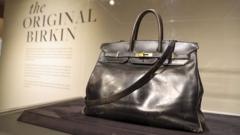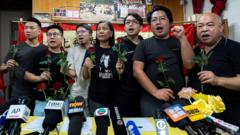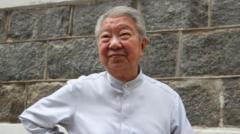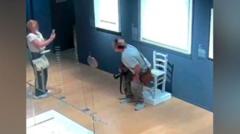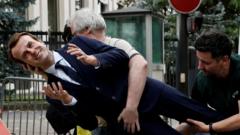This article explores how a key piece of Hong Kong's history, the Lung Wah Hotel, is being revitalized into a museum, preserving the city's rich heritage amid changing political landscapes.
**Reviving History: The New Museum at Lung Wah Hotel Celebrates Hong Kong's Heritage**

**Reviving History: The New Museum at Lung Wah Hotel Celebrates Hong Kong's Heritage**
A museum dedicated to showcasing the vibrant past of Hong Kong opens at the historic Lung Wah Hotel, transforming a long-neglected site into a cultural beacon.
The Lung Wah Hotel, once a beautiful refuge in Hong Kong during the 1950s and ’60s, is now undergoing a remarkable transformation. With its picturesque Spanish revival architecture and sprawling gardens, it was a beloved gathering spot long ago, where family and friends enjoyed weekends filled with games and leisure activities. Notably, the legendary martial artist Bruce Lee used the hotel’s roof for his practice sessions, lending the place a fascinating cultural significance.
However, the passage of time brought challenges. The hotel gradually ceased operations due to changing fire regulations, leading to a decline as the environment around it shifted from rice fields to suburban housing developments. Although the hotel's restaurant still serves its signature dishes, it has struggled to draw crowds after losing its expansive parking space to a local police station.
In a twist of fate, the hotel's remnants have found new life in the form of the Hong Kong Radiance museum. A previously unused teahouse has been repurposed into this engaging space designed to reflect various cultural elements from Hong Kong’s past. John Wu, a celebrated local collector and graphic designer, has meticulously curated the museum to evoke the feel of a film set, with harmonious colors and thematic displays that aim to transport visitors back in time.
Through the lens of this new establishment, the museum not only commemorates the vibrant history of Hong Kong but also integrates with a narrative that echoes the city’s eclectic evolution—from its origins as a factory hub to its present-day stature as a financial titan. The decision to create this museum underscores a significant movement to reclaim cultural identity amid a rapidly changing political landscape. As visitors explore the corridors of Hong Kong Radiance, they are invited to reflect on the legacies that shape their city today.
However, the passage of time brought challenges. The hotel gradually ceased operations due to changing fire regulations, leading to a decline as the environment around it shifted from rice fields to suburban housing developments. Although the hotel's restaurant still serves its signature dishes, it has struggled to draw crowds after losing its expansive parking space to a local police station.
In a twist of fate, the hotel's remnants have found new life in the form of the Hong Kong Radiance museum. A previously unused teahouse has been repurposed into this engaging space designed to reflect various cultural elements from Hong Kong’s past. John Wu, a celebrated local collector and graphic designer, has meticulously curated the museum to evoke the feel of a film set, with harmonious colors and thematic displays that aim to transport visitors back in time.
Through the lens of this new establishment, the museum not only commemorates the vibrant history of Hong Kong but also integrates with a narrative that echoes the city’s eclectic evolution—from its origins as a factory hub to its present-day stature as a financial titan. The decision to create this museum underscores a significant movement to reclaim cultural identity amid a rapidly changing political landscape. As visitors explore the corridors of Hong Kong Radiance, they are invited to reflect on the legacies that shape their city today.




